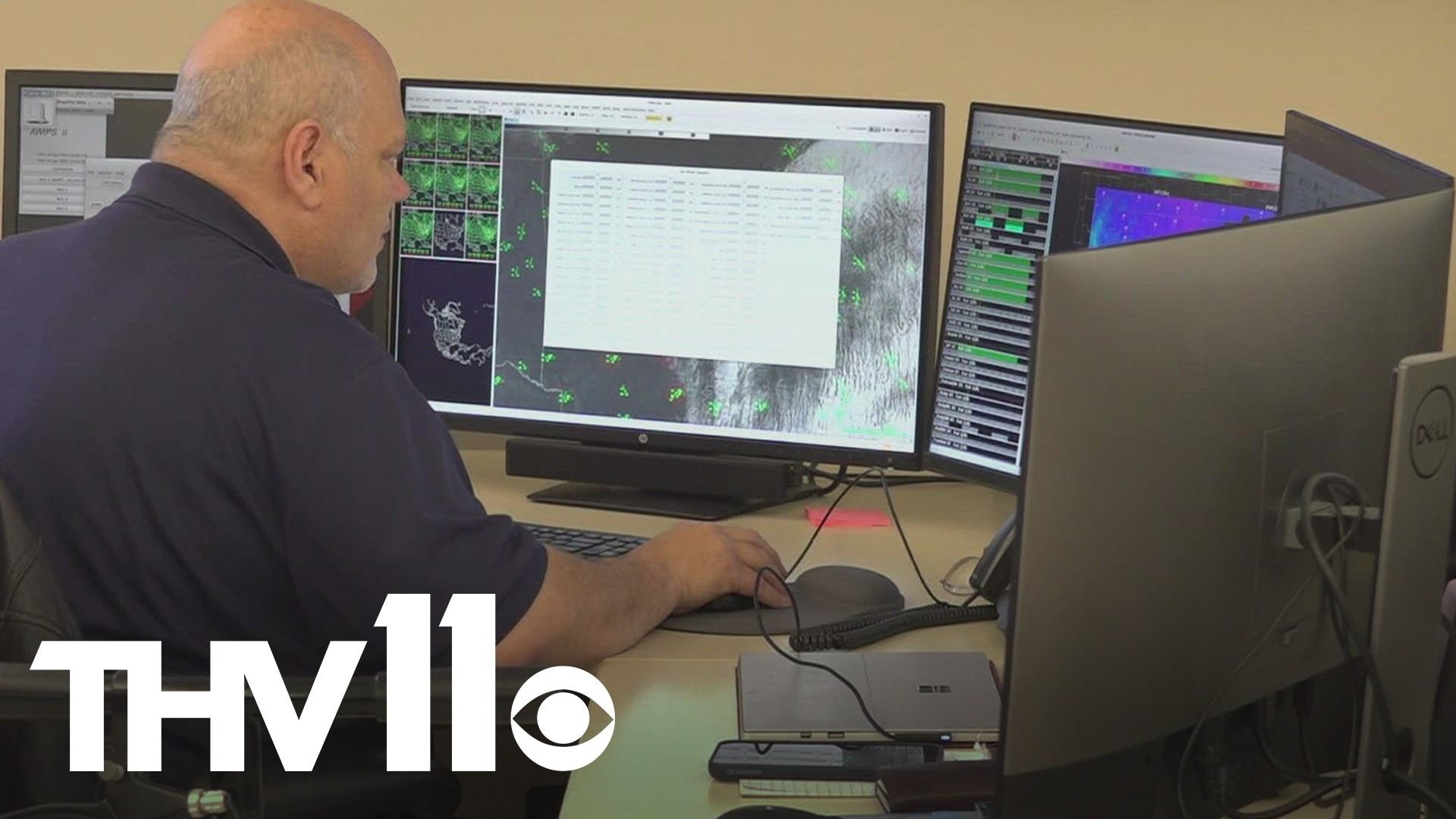NORTH LITTLE ROCK, Ark. — The National Weather Service is a complicated machine. They are the agency that issues warnings for floods, storms, and tornadoes.
But they can't do it alone.
"We use a network of people that we talk to that are on the ground, looking at storms," said Dennis Cavanaugh, Warning Coordination meteorologist for the NWS.
The NWS needs them. Spotters, storm chasers, people at home – anyone who's certified and qualified to spot storms for them.
Cavanaugh said normally it's a great system.
Until last week.
"We are aware of one bad actor, one bad individual that was spoofing their latitude and longitude and sending false storm reports," he said.
When the NWS relies on those spotters to convey accurate information, that's concerning.
What makes it even worse is that the person doing this wasn't even in the state.
"It wasn't until days later that we found out that this person was actually in Cleveland, Ohio," Cavanaugh said. "So they weren't a storm spotter."
They were almost 900 miles away, spoofing a report.
"It's someone basically hacking that system in order to maliciously send bad reports to us," Cavanaugh said.
It's frustrating, Cavanaugh said, especially since they can't be everywhere all at once – they rely on those reports.
"We're not issuing tornado emergencies for instances where there are no tornadoes, that's not what we want to do," he said.
It's a system based on trust. Cavanaugh said they may have to be more hands on in the future, to make sure this doesn't happen again.
"Just to shore up that trust issue, to make sure that we are, you know, we are reporting the best information and taking action on the best information possible," Cavanaugh said. "From all sources."
Cavanaugh said providing false information to organizations who issue warnings is illegal and goes against a federal statute.
He said they're investigating, but he's unsure if the person responsible will be prosecuted.

